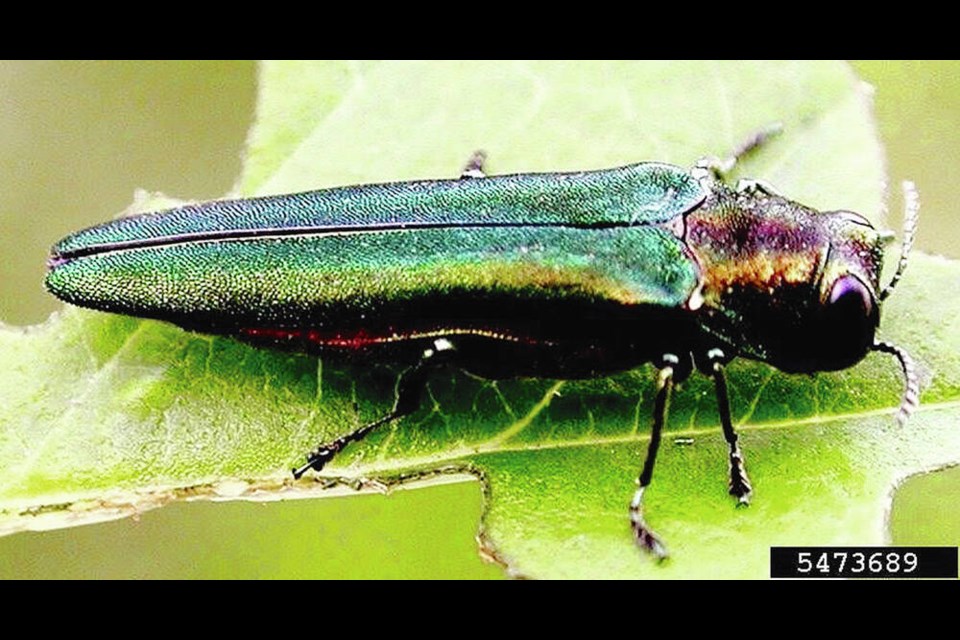There’s another bad bug threatening British Columbia trees these days.
The emerald ash borer, Agrilus planipennis, attacks and kills ash trees and has left a swath of destruction across five provinces and 34 states since first being discovered in 2002 in Windsor, Ont., where experts believe it hitchhiked aboard imported wood pallets from Asia.
The B.C. Invasive Species Council said it was only a matter of time before the insect arrived on the West Coast. This month, the Canada Food Inspection Agency issued a warning about the first population of the emerald ash borer in 麻豆传媒映画at the University of British Columbia and the University Endowment Lands.
The federal agency confirmed it was the first established population of the emerald ash borer in Canada west of Manitoba. In March a suspect larva was collected and later confirmed to be emerald ash borer.
And it is expected to spread. The metallic-emerald-green coloured insect with a bullet-shaped body is a notorious hitchhiker via firewood, ash chips and branches. The winged pests can also fly up to 10 kilometres.
Both agencies issued a warning ahead of the Canada Day long weekend and summer season as campers headed into the outdoors, often toting firewood that can spread the range of not only the emerald ash borer but other destructive pests.
“One of the easiest things we can all do to prevent the spread of invasive species like emerald ash borer, Asian long-horned beetle and spongy moth is to not move firewood,” said Gail Wallin, executive director of the Invasive Species Council of B.C. “We always urge folks to practise Buy Local Burn Local. It’s an easy way to make a big difference.”
The council’s practice is one of the best defences in reducing the spread of invasive insects. The idea is that campers should buy firewood at or near their destination to ensure they are not introducing pests or diseases to the area. If they have firewood left over, it’s recommended they leave it.
Campers should always check local fire regulations to see if campfires are allowed.
The Canadian Food Inspection Agency said the pest poses no threats to human health and is not known to attack softwood lumber species such as pine and spruce.
“It has already killed millions of ash trees in regulated areas in Canada and the United States and poses a major economic and environmental threat to urban and forested areas of North America,” the agency said in a Friday statement.
In April, the federal government restricted all movement of ash tree material such as logs, branches and wood chips, and all species of firewood from the affected sites around Vancouver. The property owners have been notified of the restrictions.
Camille Morales, an insect ambassador at the Invasive Species Council of B.C., said people should watch for symptoms of ash tree decline, keeping an eye out for yellowing leaves, thinning crown foliage, dead branches and new shoots sprouting from the tree’s trunk.
One of the signs of emerald ash borers are the D-shaped exit holes left on the bark as adults emerge. Under the bark, the tunnels created by feeding larvae are what leads to tree mortality, said Morales.
She said while ash trees are not common in British Columbia, the species is increasingly being planted in cities and towns as part of urban forests that keep the air clean, store carbon, regulate temperature and prevent runoff.
Morales said the most worrisome impact of emerald ash borer in urban areas will be costs to remove and replace the trees.



